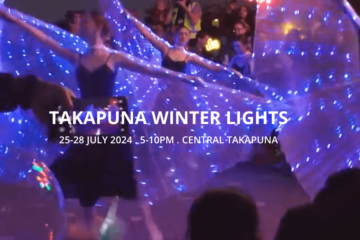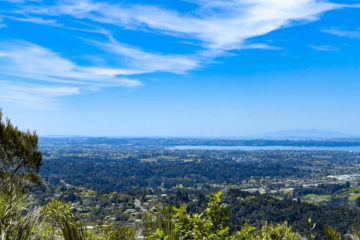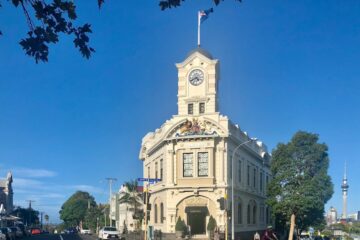Matariki
What is Matariki?
Matariki is a very important and special time for the people of New Zealand. It is the Māori name for the cluster of stars that rises in midwinter and marks the start of the new year for many Māori. Matariki means “the eyes of god” or “the little eyes” in Māori, and refers to the seven brightest stars in the cluster, also known as the Pleiades or the Seven Sisters in other cultures. Matariki is a time to celebrate the present, remember the past, and plan for the future. It is a time to honour the ancestors, share stories, feast, sing, dance, and have fun with whānau (family) and friends.
In this article, we will explain more about the meaning and significance of Matariki, how and when to observe it, and what are some of the events and activities that take place during this festive season. I will also provide some historical data on when Matariki was observed in different years. I hope you will enjoy learning more about this beautiful and unique tradition of Aotearoa (New Zealand).
When is Matariki?
Matariki does not have a fixed date on the Gregorian calendar, as it is based on the lunar cycle and the rising of the star cluster. The dates vary according to tribes and geography, as different regions may see Matariki at different times. Generally, Matariki takes place in mid-winter from late May to early July. The first public holiday to celebrate Matariki was held in New Zealand on Friday 24 June, 2022. Matariki falls on Friday 14 July in 2023, marking the reappearance of the constellation.
The best time to view Matariki is early in the morning, just before dawn, when the sky is clear and dark. You can use a star map or an app to help you locate the cluster in the northeastern sky. You can also look for Tautoru (Orion’s Belt) and follow its line upwards to find Taumata-kuku (Aldebaran), then go a little further to find Puanga (Rigel), which is close to Matariki. Some people use Puanga as an alternative indicator of the new year, as it may be easier to see than Matariki in some areas.
Matariki – Public Holiday Weekend Dates
| Year | Tangaroa Lunar Period | Matariki Public Holiday Date |
| 2024 | 29 Jun – 2 Jul | 28 Jun |
| 2025 | 19–22 Jun | 20 Jun |
| 2026 | 8–11 Jul | 10 Jul |
| 2027 | 27–30 Jun | 25 Jun |
| 2028 | 15–18 Jul | 14 Jul |
| 2029 | 4–7 Jul | 6 Jul |
| 2030 | 23–26 Jun | 21 Jun |
| 2031 | 11–14 Jul | 11 Jul |
| 2032 | 30 Jun – 2 Jul | 2 Jul |
| 2033 | 20–23 Jun | 24 Jun |
| 2034 | 9–12 Jul | 7 Jul |
| 2035 | 29 Jun – 1 Jul | 29 Jun |
| 2036 | 17–20 Jul | 18 Jul |
| 2037 | 6–9 Jul | 10 Jul |
| 2038 | 25–28 Jun | 25 Jun |
| 2039 | 13–16 Jul | 15 Jul |
| 2040 | 1–4 Jul | 6 Jul |
| 2041 | 21–24 Jul | 19 Jul |
| 2042 | 10–14 | 11 Jul |
| 2043 | 30 Jun – 3 Jul | 3 Jul |
| 2044 | 19–22 Jun | 24 Jun |
| 2045 | 7–10 Jul | 7 Jul |
| 2046 | 26–29 Jun | 29 Jun |
| 2047 | 15–18 Jul | 19 Jul |
| 2048 | 3–6 Jul | 3 Jul |
| 2049 | 22–25 Jun | 25 Jun |
| 2050 | 11–14 Jul | 15 Jul |
| 2051 | 1–4 Jul | 30 Jun |
| 2052 | 20–23 Jun | 21 Jun |
Where in Auckland is it possible to see Matariki?
There are many places in Auckland where you can see Matariki, depending on your location, preference, and weather conditions. Here are some suggestions from various sources:
- Takaparawhau / Bastion Point: This is a significant site for Ngāti Whātua Ōrākei and a memorial park for former prime minister Michael Joseph Savage. It has an obelisk, a sunken pool, a garden, and a harbour view. You can gather here respectfully to greet Matariki.
- Ōrewa Beach: This is a popular coastal town north of Auckland, known for its clear skies and long coastline. You can find a viewing platform at 469 Hibiscus Coast Highway or choose any spot along the beach to watch Matariki.
- Tūpuna Maunga / Volcanic Cones: Auckland has 48 volcanic cones that offer high vantage points to see the stars. You can choose one that is meaningful to you, such as Maungakiekie / One Tree Hill, Maungawhau / Mt Eden, Maungarei / Mt Wellington, Ōwairaka / Te Ahi-kā-a-Rakataura / Mt Albert, or Te Pane o Mataoho / Te Ara Pueru / Māngere.
- Duder Regional Park: This is a coastal farm park east of Auckland, on the Whakakaiwhara Peninsula. It was one of the first places visited by the Tainui canoe and an important settlement for Ngāi Tai ki Tāmaki. It has stunning views of the Hauraki Gulf.
- Maungauika / North Head: This is a volcanic cone in Devonport that was used as a military defence site. It has tunnels, guns, and cannons that you can explore. It also has panoramic views of the city and the harbour.
Why is Matariki important?
Matariki is important because it connects people to their culture, their land, their environment, and their ancestors. It is a time to reflect on the past year, acknowledge the achievements and challenges, remember those who have passed away, and express gratitude for the gifts of life and nature. It is also a time to look forward to the future, set new goals and aspirations, seek guidance and inspiration from the stars, and celebrate the potential of the new year.
Matariki is also important because it reflects the Māori worldview and values, such as whanaungatanga (kinship), manaakitanga (hospitality), kaitiakitanga (guardianship), mātauranga (knowledge), and tikanga (customs). These values are expressed through various rituals, ceremonies, arts, crafts, games, and stories that are part of the Matariki celebrations.
Matariki is also important because it showcases the diversity and richness of Māori culture and identity, as well as the unity and harmony of all New Zealanders. Matariki is a time to share and learn from each other, respect and appreciate each other’s differences, and celebrate each other’s similarities. It is a time to embrace the spirit of Aotearoa as a multicultural and inclusive nation.
How do we celebrate Matariki?
There are many ways to celebrate Matariki, depending on your preferences, interests, and traditions. Some of the common ways are:
- Karakia (prayers) and waiata (songs): These are performed to greet Matariki, honour the ancestors, bless the new year, and express gratitude for life and nature. Some karakia are specific to each star in the cluster, as they represent different aspects of life. You can find some examples of karakia and waiata in this resource.
- Hāngī (earth oven) and hākari (feast): These are prepared to share food and fellowship with whānau and friends. Hāngī is a traditional way of cooking food using heated rocks buried in a pit. Hākari is a feast that includes various dishes made from kai (food) harvested from land and sea.
- Whakapapa (genealogy) and pūrākau (stories): These are shared to remember the ancestors, pass on the history and culture, and teach the values and morals of Māori society. Whakapapa is the tracing of one’s lineage and identity. Pūrākau are stories that explain the origins and meanings of Matariki and other natural phenomena.
- Mahi toi (arts and crafts) and tākaro (games): These are enjoyed to express creativity, have fun, and learn new skills. Mahi toi include activities such as weaving, carving, painting, tattooing, and sculpting. Tākaro include games such as kī-o-rahi (ball game), whai (string game), pōtaka (spinning top), and manu tukutuku (kite flying).
- Matariki events and festivals: These are organised to showcase and celebrate Māori culture and identity, as well as the diversity and unity of New Zealand society. Matariki events and festivals include concerts, exhibitions, workshops, performances, fireworks, and parades. You can find some examples of Matariki events and festivals in this website.
When was Matariki historically?
Matariki has been observed by Māori for centuries, as well as by other indigenous peoples around the world who have their own names and traditions for the star cluster. However, the exact dates of when Matariki was observed in different years are not easy to determine, as they depend on various factors such as location, visibility, weather, lunar phases, and tribal customs. Moreover, the historical records of Matariki are scarce and incomplete, as they were mostly oral and not written down until the arrival of Europeans.
Nevertheless, some researchers have attempted to reconstruct the historical dates of Matariki using astronomical calculations, historical documents, oral traditions, and cultural knowledge. One of them is Professor Rangi Matamua, a leading expert on Māori astronomy and the author of the book “Matariki: The Star of the Year”. He has created a table that shows the approximate dates of when Matariki was observed from 1900 to 2020. You can see a part of his table below:
| Year | Date |
|---|---|
| 1900 | 28 June |
| 1901 | 17 June |
| 1902 | 7 June |
| 1903 | 27 May |
| 1904 | 15 June |
| 1905 | 4 June |
| 1906 | 24 May |
| 1907 | 13 June |
| 1908 | 2 June |
| 1909 | 22 May |
| … | … |
| 2010 | 14 July |
| 2011 | 4 July |
| 2012 | 21 June |
| 2013 | 10 June |
| 2014 | 28 June |
| 2015 | 18 June |
| 2016 | 6 June |
| 2017 | 25 June |
| … | … |
Conclusion
Matariki is a wonderful and meaningful celebration that connects us to our past, present, and future. It is a celebration that honours our culture, our land, our environment, and our ancestors. It is a celebration that inspires us to live with gratitude, hope, and joy. It is a celebration that unites us as one people under the same stars.
Source: matariki.com


